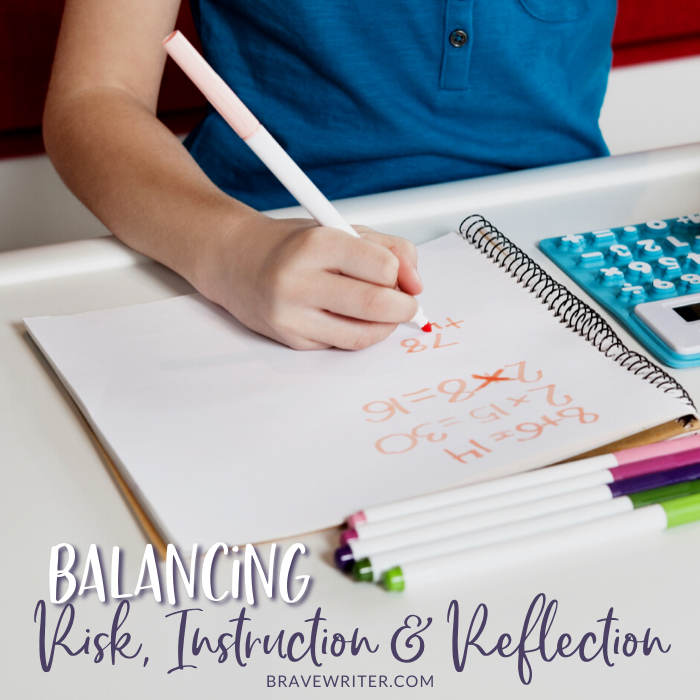Balancing Risk, Instruction, and Reflection

Did you know? Homeschooled kids never miss a math problem. Their parents won’t let them!
In traditional school, your kid turns in math homework and gets back a score: minus three (—3) and you both call it a day.
In homeschool, the parent hovers, and sees the mistake happening in real time, and invites reworking the problem to set it right. No minus three for this kid.
This is one of the true beauties of homeschooling—in the moment when the problem is most meaningful to the student, you can help the child discover what step was missing.
Naturally: we can overdo it too! Sometimes it feels great to know you got 17 out of 20 problems right and you’re done! So give yourself and your child a break once in a while. Still, this ability to see an error and fix it quickly is powerful.
Learning occurs when the parent and student balance:
- risk,
- instruction,
- and reflection.
Some days focus on risk: lots of messy attempts.
Other days, work at instruction: fewer problems, more collaboration, modeling.
And finally: take time off of working problems to reflect. Talk about math (or whatever subject) without working problems. See if you and your child can describe the steps or imagine a current use for what is being learned.
The tutorial model is powerful!
This post is originally from Instagram and @juliebravewriter is my account there so come follow along for more conversations like this one!


















